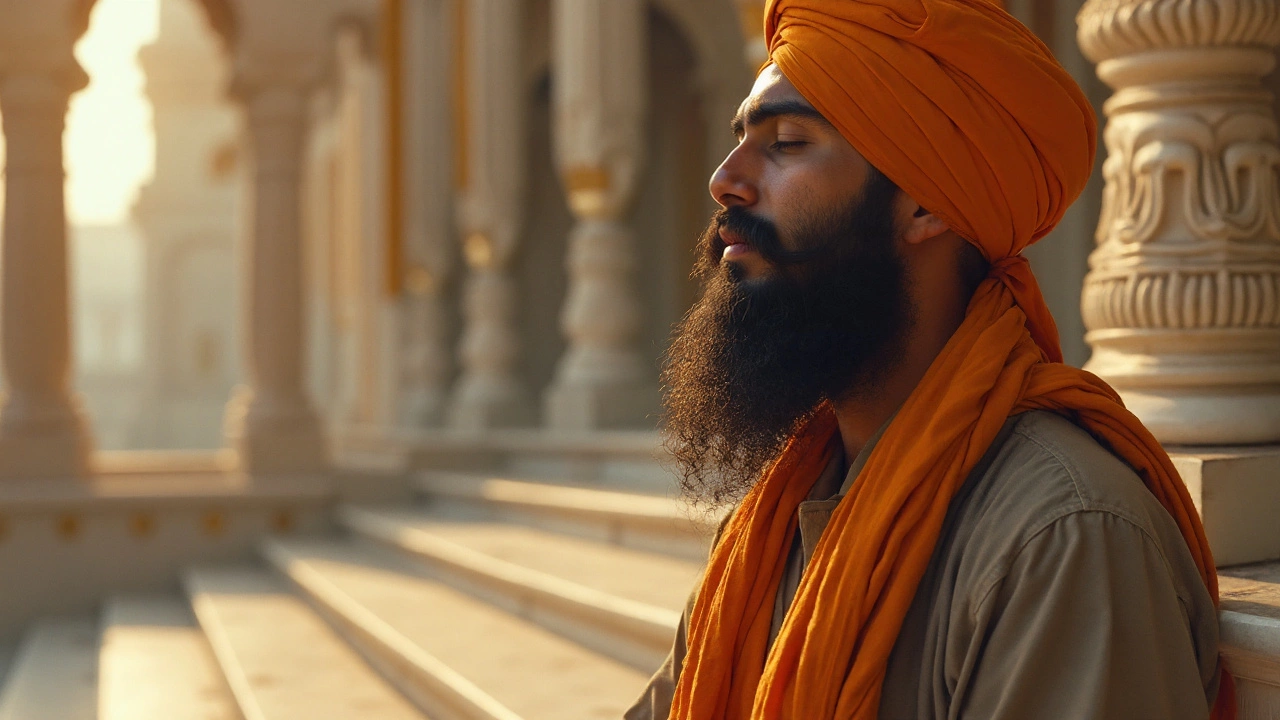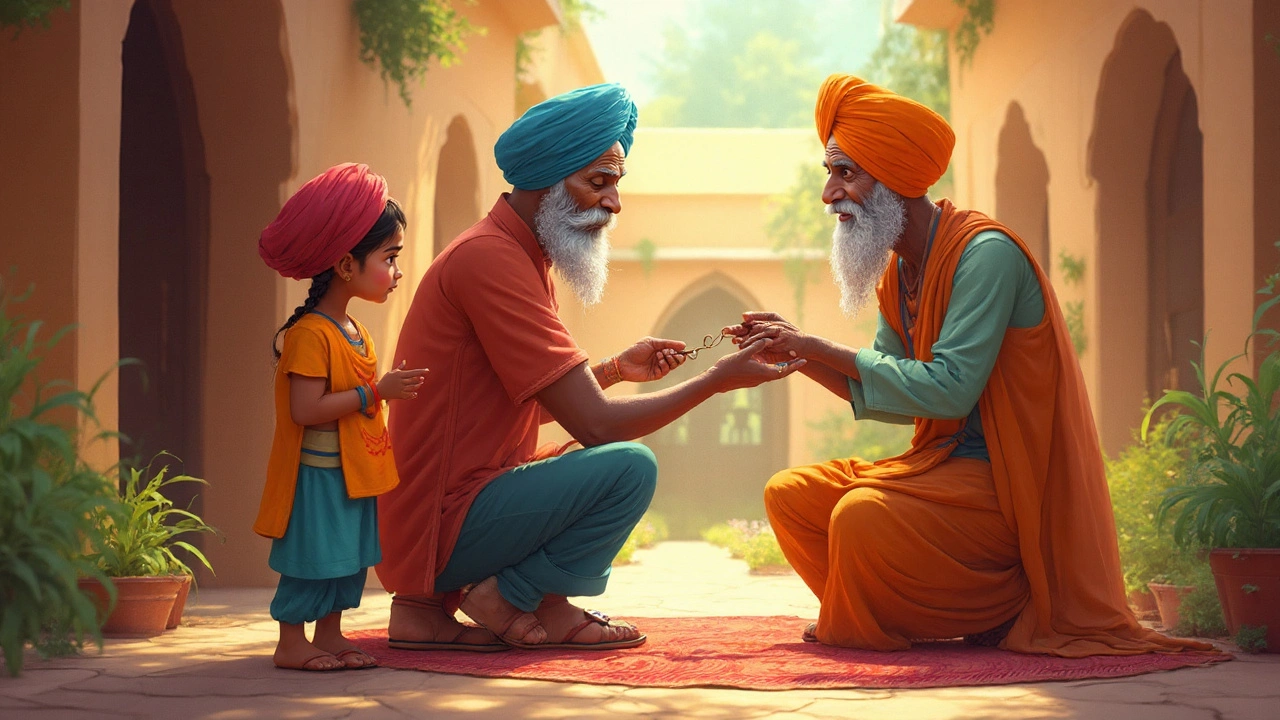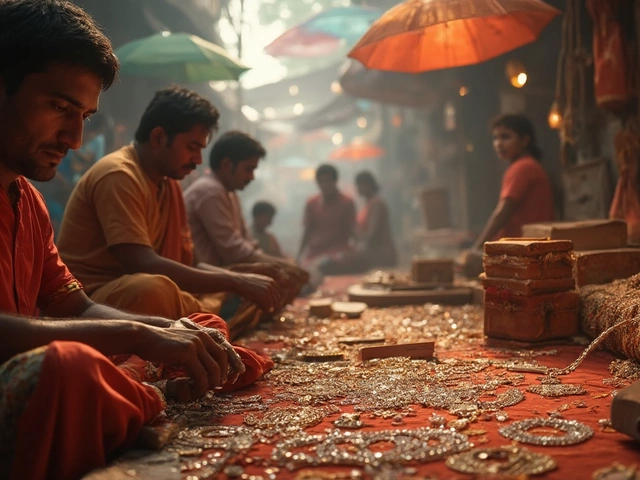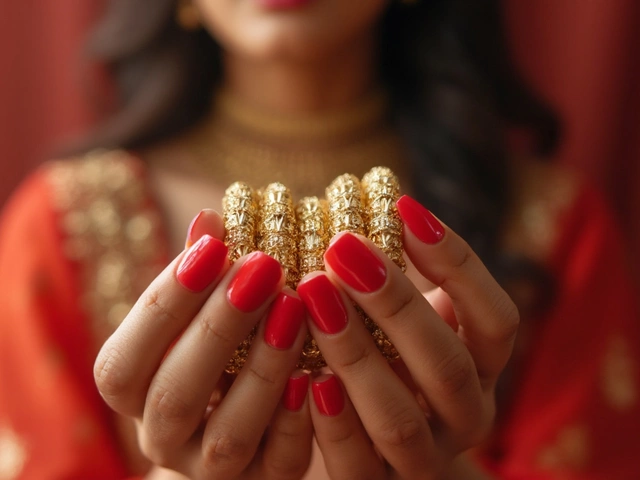
Ever met someone with a long, unshorn beard, carefully tied turban, and wondered what the story was? Go to any bustling city with a Sikh population—Vancouver, London, Amritsar—or pass by a Gurdwara on a festival day, and you'll see men, women, and even kids with carefully cared-for, never-cut hair. This isn’t just a quirky tradition for photos or special days—Sikhs, and I mean most fastidious ones, never cut or shave any body hair for their entire lives. Why? The answer winds through stories of faith, rebellion, identity, and a modern-day challenge against society’s definition of what’s 'normal.' Ready for the hair-raising (sorry, had to) details? Here we go.
The Spiritual Significance of Unshorn Hair (Kesh) in Sikhism
The single biggest reason Sikhs don’t cut their hair comes from their core religious beliefs. The sacred word for hair in Sikhism is 'Kesh.' This isn’t just a preference; it’s one of the Five Ks—articles of faith a baptized Sikh must carry. Guru Gobind Singh, the tenth Sikh Guru, made this law clear in 1699 during the creation of the Khalsa (the block of Sikhs dedicated to their faith and code). The reason? By keeping the body as created by God, Sikhs show acceptance of divine will. Think of it as a symbol of surrender, but also of unity—the hair itself is said to be a natural part of a human given by the Creator, so altering it would be like second-guessing perfection.
The unshorn hair is more than appearance, though. Sikhs believe hair enhances a person’s spiritual energy, serving as an antenna for inner connection. The covering of the hair using a turban (for men) or scarf (for women) isn’t only for modesty or neatness—it’s a sign of respect for the body and reminds the Sikh, throughout the day, that their mission and purpose is always tied to the divine. That means running late for work or playing soccer after class, the rules don’t bend—you keep your hair covered and uncut, always.
Here’s a cool fact: The Rehat Maryada, which is the Sikh code of conduct, is crystal clear that hair—on the head or anywhere else—should not be altered. Not shaving, not trimming, not tweezing. It’s all or nothing. And this isn’t limited to men. Sikh women also follow this. You might spot Sikh women with full eyebrows or visible arm hair and realize that Kesh is very much an equal part in both men’s and women’s lives. That’s a pretty strong stance, especially in a world obsessed with beauty standards.
The whole idea is about honoring what you’ve been given and resisting the pressure to fit into mainstream trends. From a spiritual standpoint, this refusal to cut hair stands as a visible badge of Sikh identity—a mark of someone living by their Guru’s teachings, boldly and unapologetically.
Historical Events That Shaped the Sikh Practice of Kesh
Now, Sikh hair tradition didn’t start in a vacuum. The story really got dramatic under Mughal rule in India from the 16th to 18th centuries. Sikhs were a persecuted minority. The Khalsa, with their uncut hair and distinctive turbans, stood out—a loud, visible sign of stubborn resistance and unity in a time when blending in was the safer bet. Many Sikhs faced execution, torture, or worse for refusing to cut their hair, and there are gut-wrenching stories in their oral traditions about people dying rather than give up this aspect of faith.
Here’s where numbers add some weight: In one of the bloodiest periods, between 1716 and 1780, some historians say nearly 20,000 Sikhs were killed directly for their religious practices, including refusing to cut their hair. Instead of giving in, Sikh martyrs—Bhai Taru Singh often cited—chose death before dishonor. Taru Singh was scalped alive for refusing to shave his head. When a ritual becomes that important, you see it’s way more than just a grooming choice. This collective suffering forged a tough-as-nails group identity, and the turban (Dastaar) and unshorn hair became, in many ways, a symbol of standing up against oppression.
Fast-forward to India under British rule: Sikhs continued to maintain this visible flag of difference, even when tempted to drop their traditional practices to secure jobs or social acceptance. British rulers often recruited Sikhs for their renowned bravery, and the presence of unshorn hair became so iconic that the image was used in late 19th-century colonial recruitment posters. Sikh regiments in the British Indian Army proudly wore their turbans and uncut hair in battles from World War I to World War II.
All this history shows clearly—what started as a spiritual instruction became, over centuries, a shield and a sword. Sikh hair isn’t just about the self; it was about the community, resistance, and survival.

Sikh Hair in Everyday Life: Routines, Turbans, and Tips
Alright, let’s get personal for a moment. Never cutting your hair means, well, a lot of hair. Sikh men (and committed boys) usually wrap their hair in a bun and fasten it with a simple cloth called a 'Patka' at home or under a turban (Dastaar) for formal or public occasions. Turban tying itself is practically an art form, and each style tells a story. Older men might use the classic double-wide, while younger guys in North America may switch to fashionable styles like the 'parna' or choose bright colored turbans for special events.
Sikh women often braid their hair and either cover it loosely with a scarf or, if they belong to the orthodox Khalsa, wear a turban of their own. Imagine managing two or three feet of hair every day! Washing hair can be a weekly ritual—sometimes more often in hot climates—and the drying alone can eat up time. Special wooden combs called 'Kangha' are used to keep the hair tangle-free, and keeping one tucked in the hair or turban is another of the Five Ks.
Here are a few everyday tips straight from Sikh households:
- Use natural oils—coconut, almond, or mustard oil—for nourishment. Many Sikh families swear by nighttime oiling routines to keep hair strong and manageable.
- Wide-tooth combs (especially wooden Kangha) are a must to avoid split ends.
- When drying, avoid harsh blow-drying. Patience is king. Some will let their hair dry in a braid overnight.
- If you wear glasses, special turban-tying tutorials on YouTube show ways to make the fit comfy without squashing your frames.
- For kids, short back-of-the-head buns with a soft Patka help keep hair out of their eyes during playground chaos.
It’s a full-time commitment. Even things like swimming can mean wrapping hair in a special waterproof cap. Family life is designed around these routines—dedicated 'hair-washing day,' fathers teaching sons how to tie a turban, and moms showing daughters braiding tricks to keep hair healthy and protected under scarves. Taking care of Kesh is a sign of pride, but it’s also deeply practical: clean, well-maintained hair avoids scalp issues and keeps things feeling fresh—something extra important during Punjab’s brutal summers, where sweat is no joke.
Challenges Sikhs Face Around Hair: Stereotypes, Modern Trends, and Personal Stories
Keeping unshorn hair isn’t always an easy ride, especially in countries where Sikhs are a minority. Kids get picked on at school, adults face workplace bias, and even getting through airport security can mean extra questions and awkward searches. Wearing a turban or having long hair may seem 'strange' to those who don’t get it. Some Sikh children in North America have faced bullying so severe they’ve cut their hair to blend in, creating heartache at home. It hurts, because for many families, cutting hair isn’t just a physical change—it feels like losing a piece of the soul.
Social media, unfortunately, hasn’t always helped. Images of 'perfect' bodies, faces, and hairstyles ramp up pressure to fit in—especially for Sikh women, who deal with Western beauty ideals and the double challenge of not shaving or tweezing facial or body hair. It’s easy to see why some Sikhs privately question the tradition, especially in multicultural cities where personal freedom is prized. There are stories out there, however, of renewed pride: Sikh celebrities like Harman Singh, who famously helped save a child’s life by removing his own turban (a huge act of compassion and humility), or actors and musicians proudly rocking traditional hair and turban at red-carpet events, changing minds and inspiring younger generations.
Modern Sikh organizations have stepped up, too. The World Sikh Organization and United Sikhs have launched guides for schools and workplaces, busting myths and educating people about the meaning behind unshorn hair. Workshops teach young Sikhs how to tie turbans confidently, even sharing answers for awkward classroom questions. In 2016, the US Army changed some policies to allow Sikhs to serve with their hair and turbans, after years of legal battles. That was a big win for freedom of religious expression. Still, the real challenge is internal—whether to fit in or stand out, weighing faith against comfort and acceptance. There’s no single answer. For some, Kesh is an anchor; for others, a lifelong struggle.

Sikh Hair Traditions in Modern Life: Facts, Numbers, and Looking Forward
Let’s get into some recent data. As of 2024, Sikhism has nearly 30 million followers worldwide, most living in India’s Punjab state, but millions more settled in Canada, the UK, the US, Australia, and beyond. A study published in 'The Sikh Review' in April 2023 polled urban Sikh youth (ages 15-25) across major cities: about 66% of males and 43% of females strictly kept uncut hair and wore religious head coverings. In contrast, numbers were higher in rural Punjab, where keeping Kesh is seen as almost non-negotiable. This gap comes down to social pressures, job requirements, and even dating prospects—proving that old tradition meets modern life head-on, every single day.
| Region | Men Keeping Kesh (%) | Women Keeping Kesh (%) | Most Common Head Covering |
|---|---|---|---|
| Punjab (rural) | 91 | 74 | Turban/Chunni |
| Panjab (urban) | 68 | 45 | Turban/Scarf |
| Canada | 76 | 56 | Turban/Hijab/Patka |
| UK | 71 | 44 | Turban/Scarf |
| US | 64 | 38 | Patka/Scarf |
These numbers shift with second and third generations. There’s a tug-of-war between strict adherence and adapting for comfort or acceptance. But you’ll find more Sikh social media stars, teachers, doctors, and athletes keeping their Sikh hair traditions visible and even cool, flipping old stereotypes on their heads. Sikh advocacy groups are also helping fight discrimination and organizing workshops on why Kesh matters and how to care for it—think 'turban-tying 101' or self-care tips for healthy hair, right down to sharing oil recipes passed down for generations.
At its heart, the Sikh practice of not cutting hair isn’t only about rules or uniformity. It’s a powerful statement: about believing in yourself, carrying the history of your ancestors, and showing the world that your identity—hair, turban, and all—is a thing of pride. And that’s a lesson you don’t need to be Sikh to get behind.


